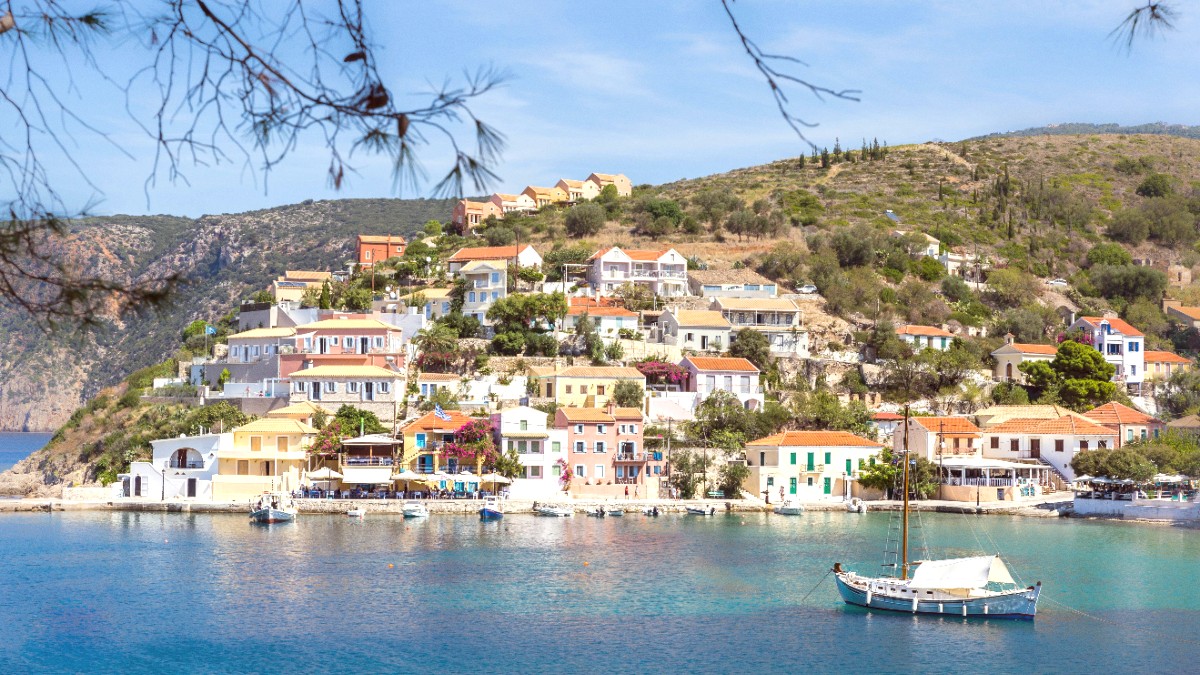
Greece
Argostoli boasts several instantly recognizable landmarks, each offering an unique perspective on the town's charm and history. From architectural marvels to natural havens, there's something to captivate every visitor.
These sites are central to Argostoli's identity and provide insight into its past and present.
Small local art exhibitions may occasionally be held in cultural centers or hotel lobbies. Check local announcements for current displays.
Napier's Garden, a tranquil public park. Botanic Gardens of Kefalonia, located outside Argostoli, showcases local flora.
Katavothres, an unique geological phenomenon where seawater flows into sinkholes. Mount Ainos National Park offers hiking trails and panoramic views.
Koutavos Lagoon for observing loggerhead sea turtles (Caretta caretta) in the mornings near fishing boats. Birdwatching opportunities exist in wetland areas.
Melissani Cave (boat rides within the cave) and Drogarati Cave (impressive stalactite and stalagmite formations, known for acoustics), both near Sami.
Makris Gialos Beach & Platis Gialos Beach (Lassi) are popular sandy beaches. Other nearby beaches Gradakia, Paliostafida, and Kalamia.
Argostoli's signature spots that capture its unique character and history.
This stone bridge stretches gracefully across the Koutavos Lagoon. Built by the British in the 19th century, it is a significant architectural landmark and a symbol of the town. Now pedestrianized, it offers a pleasant and scenic walk with panoramic views.
A large, shallow lagoon that forms Argostoli's natural harbor. It is an ecological sanctuary and a serene presence adjacent to the bustling town. Home to loggerhead sea turtles (Caretta caretta), often spotted near the waterfront in the mornings.
A charming, round, white lighthouse located on a small peninsula north of Argostoli. It offers spectacular panoramic views of the Ionian Sea and is renowned as a prime spot for sunset viewing.
The main pedestrianized shopping street in Argostoli. This lively thoroughfare is lined with a mix of shops, cafes, bakeries, and a prominent clock tower. It is the social and commercial heart of the town, ideal for a leisurely stroll and people-watching.
A prominent and architecturally noteworthy church located on Lithostroto street. Its distinctive bell tower is a familiar landmark in the town center. Generally open during daylight hours; free entry. Dress respectfully when visiting religious sites.
A small, tranquil public park in Argostoli, named after British Governor Sir Charles James Napier. It provides a peaceful escape with benches and greenery, a quiet spot amidst the town's activity.
The highest mountain on Kefalonia, a protected area, home to unique black fir trees and reputedly, wild horses. The park offers various hiking trails and panoramic views of the island and the Ionian Sea.
A unique geological phenomenon near Argostoli where seawater flows into sinkholes and travels underground across the island, eventually resurfacing in the Melissani Cave. A waterwheel demonstrates the powerful current.
A large, shallow lagoon, ecological sanctuary, and serene presence. Home to loggerhead sea turtles (Caretta caretta), often spotted near the waterfront in the mornings, seeking food from fishing boats. Maintain respectful distance.
Kefalonia's natural beauty stretches to its stunning coastlines and fascinating underground wonders.
Discover less-known places that offer unique insights and tranquility, providing a more authentic experience of Kefalonia.
These hidden gems often deliver memorable moments away from the main tourist flow.
Explore spots that offer quiet contemplation and unique perspectives.
Capture the essence of Argostoli through its most picturesque scenes.
Dive into Kefalonia's rich history and local traditions.
Beyond the famous sites, immerse yourself in the daily rhythms and history of Argostoli and Kefalonia.
Much of Argostoli was rebuilt after the 1953 earthquake, resulting in a more modern appearance. However, walking along Lithostroto and exploring the quieter side streets can reveal reconstructed buildings that hint at traditional town planning.
The blend of old and new tells a story of resilience.
While not a major art hub, Argostoli has cultural spaces.
These venues offer a glimpse into the island's contemporary cultural expression.
You will find small monuments and statues in Argostoli's parks and squares, commemorating local heroes, significant historical figures, or events.
Each monument tells a piece of Argostoli's story.
Most outdoor landmarks are accessible 24/7 with no entry fee. Museums have specific opening hours and modest fees (check locally for current schedules).
Argostoli's town center is highly walkable. For sites outside the immediate center, taxis or a rental car are recommended. The Lixouri ferry is convenient for the Paliki peninsula.
Pavements can be uneven in older areas. Newer constructions and main promenades offer better accessibility. Plan ahead for those with mobility challenges.
Always confirm opening hours and any potential fees for museums and attractions, as these can change seasonally or on public holidays.
Respect local customs when visiting religious sites, dressing modestly and maintaining quiet.